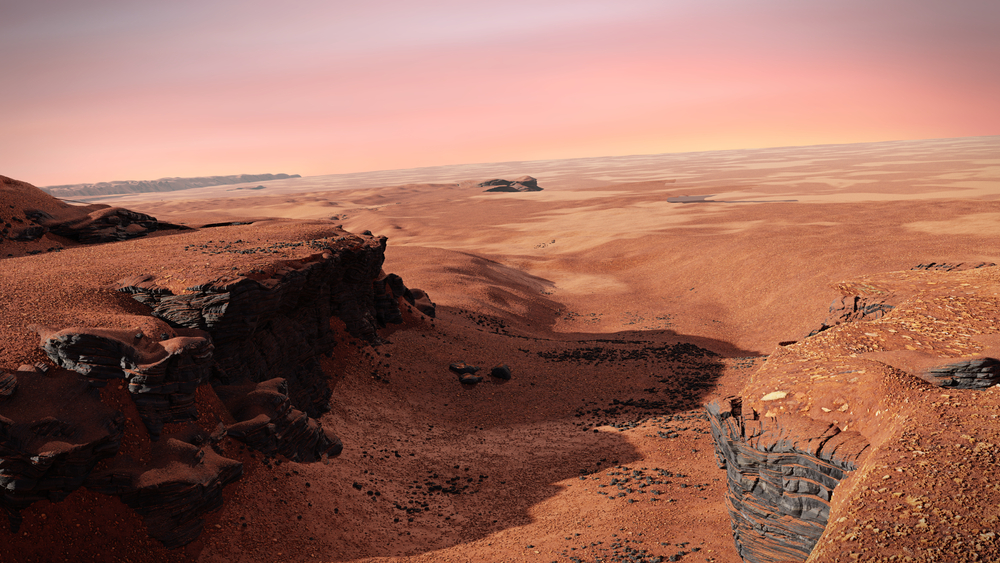Scientists have opened the possibility to identify microbial fossils in terrestrial rocks and search for fossils on Mars.
The first life on Earth was formed 4 billion years ago as microorganisms that live in pools and oceans. What if the same thing happened on Mars? If so, how would we prove it?
Scientists who want to identify evidence of fossils of life in ancient Martian microorganisms now find a way to test their hypothesis and detect microorganism fossils in gypsum samples similar to Martian sulfate rocks It proves that it can be done.
“Our findings provide a methodological framework for detecting Mars’ sulfate mineral biosignatures and could lead to future Mars exploration missions,” said PhD at the Institute of Physics at the University of Bern. said Youcef Sellam, a course student and the first author of the article.
Water supply that is believed to be preserved on Mars
Billions of years ago, Mars water was depleted. When the pool evaporates, gypsum and other sulfates form, leaving minerals precipitated from the water, potentially fossilizing the remaining organic life.
This means that if microorganisms such as bacteria lived there, traces of their existence could be preserved as fossils of Mars.
“Plaster has been widely detected on the surface of Mars and is known for its exceptional fossilization potential,” Serum explained. “It forms quickly and traps microorganisms before decomposition occurs, conserving biological structures and chemical biosignatures.”
However, to identify fossils of these microorganisms, it is first possible to identify similar fossils in places where such microorganisms are known to exist, such as the Mediterranean gypsum layer that developed during the Messinian salinity crisis. You need to prove that.
Laser technology that helps provide evidence
The Messenger’s salinity crisis occurred when the Mediterranean was blocked from the Atlantic Ocean.
This led to rapid evaporation, making the ocean sensitive and deposited thick layers of evaporated rock, containing gypsum. These deposits provide excellent terrestrial analogues for Mars sulfate deposits.
Scientists have chosen equipment that can be used in spaceflight: miniature laser-powered mass spectrometers can analyze in detail the chemical composition of micrometer-like samples.
They sampled gypsum from the Sidi Boutbal quarry in Algeria and analyzed it using a mass spectrometer and optical microscope. This was induced by criteria that helped to distinguish between potential microbial fossils and natural rock formations.
These include irregular, supple, potentially hollow morphology, and the presence of chemical elements necessary for life, carbonaceous materials, and minerals such as clay and dolomite.
Does Mars fossil refer to previous life?
Scientists have identified long, twisted fossil filaments in Algerian plaster, which were previously interpreted as benthic algae or cyanobacteria.
These were embedded in gypsum and surrounded by dolomite, clay minerals, and pyrite. The presence of these minerals indicates the presence of organic life, as the presence of nuclei-free cells-clays provides the elements that clays need to form.
It also promotes dolomite formation in acidic environments like Mars, increasing the surrounding alkalinity, and concentrates ions in cell envelopes. For dolomite to form within gypsum without the presence of organic life, high temperatures and pressures of dehydration of the gypsum are required. This is not consistent with Mars’s environmental knowledge.
If mass spectrometers identify the presence of clay and dolomite in Mars gypsum in addition to other biosignatures, this could be a critical signal for fossilized life.
Sellam concluded: “While our findings strongly support the biogenetic nature of gypsum fossil filaments, distinguishing between abiotic mineral layers and true biosignatures is a challenge.
“Additional independent detection methods improve confidence in life detection. Additionally, Mars has unique environmental conditions that can affect biosignature storage over geological periods.”
Source link

